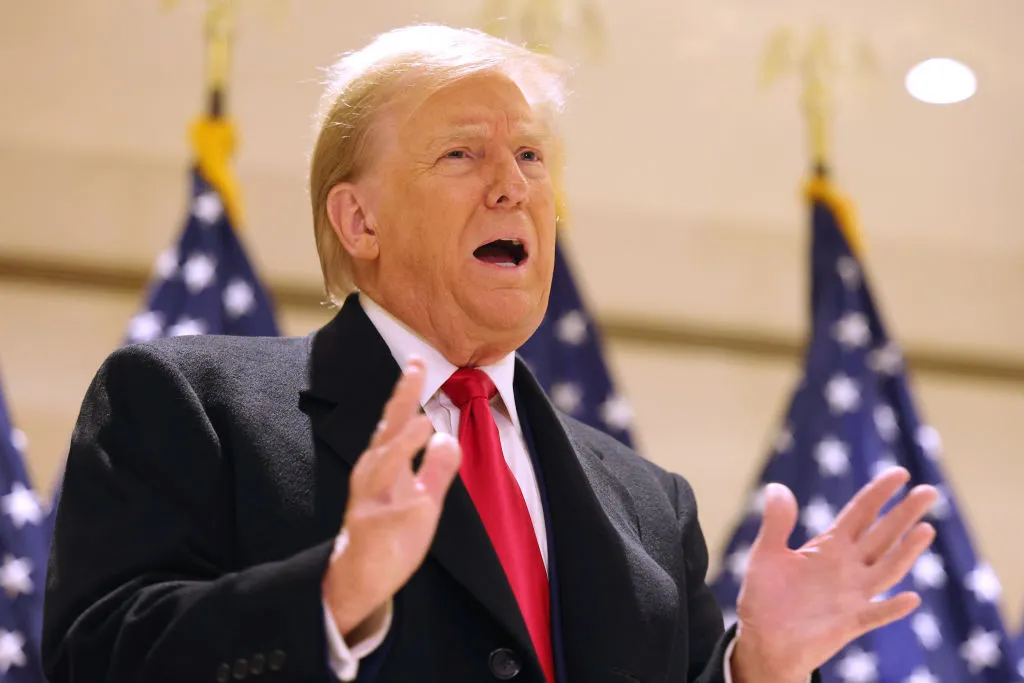Irrespective of whether Donald Trump ends up being a two-term president, surely no modern political figure has done more to raise the profile of the capital letter. Joe Biden, in contrast, does not seem as enamored with his caps lock button as the current Tweeter-in-Chief. No more FAKE NEWS, WITCH HUNT or MAKE AMERICA GREAT AGAIN if Biden is in the White House. At one point, Trump’s love of upper case was even mooted as the possible final straw which would lead to a third world war, after the President’s famously cautious tweet in July 2018:
‘To Iranian President Rouhani: NEVER, EVER THREATEN THE UNITED STATES AGAIN OR YOU WILL SUFFER CONSEQUENCES THE LIKES OF WHICH FEW THROUGHOUT HISTORY HAVE EVER SUFFERED BEFORE. WE ARE NO LONGER A COUNTRY THAT WILL STAND FOR YOUR DEMENTED WORDS OF VIOLENCE & DEATH. BE CAUTIOUS!’
The first alphabets solely comprised capitals, thanks in part, no doubt, to the understandable preference of the men with chisels for straight lines. It was only with pen and ink that lower-case letters started to gain recognition, the hand naturally softening some of the capitals’ harsh edges. Alcuin of York, the 8th-century Benedictine monk, may have played a central role in developing so-called Carolingian minuscule, the lower-case Roman alphabet that developed towards the end of the first millennium ad.
The terminology of ‘upper case’ and ‘lower case’ itself comes from the 16th century and the spread of printing: the printing blocks for capitals would be kept in trays (‘cases’) above those for lower-case letters.
***
Get a print and digital subscription to The Spectator.
Try a month free, then just $7.99 a month
***
As a teacher, I am thought quaint by my students when I insist that they use capitals correctly. They dutifully give me ‘France’ and ‘French’ rather than ‘france’ and ‘french’ — it pleases me, they think, and keeps me quiet, but they don’t really see the point. And what is the point? There are of course the bigger questions about the value we accord to the things we capitalize, but mostly it’s surely aesthetic. Where block caps are painful on the eyes — that Trump tweet had you blinking, didn’t it? — a paragraph devoid of capitals is equally a struggle to read. Even this short article would be fairly intolerable without the inherent variation offered by the mix of majuscule and minuscule. Capitals guide you to the start of the sentence and, as with punctuation, provide points of difference. The text — like the voice — needs to rise and fall.
Will we stick with them? This is the first generation of children who learn to swipe before they can write, and it’s an undoubted faff to capitalize while texting at speed; this too is the first generation for whom voice recognition will start to have serious applications, rather than merely being a party piece. What will be the role for the capital then?
The apostrophe has long had its champions — not that it seems to have done it much good — but capitals? Now, however, Trump has pulled capital letters into his own special limelight. If the President and his supporters are scrabbling for a legacy after polling day, they could do worse than his contribution to orthography.
This article was originally published in The Spectator’s UK magazine. Subscribe to the US edition here.






















